#Alexander Gardner
Text
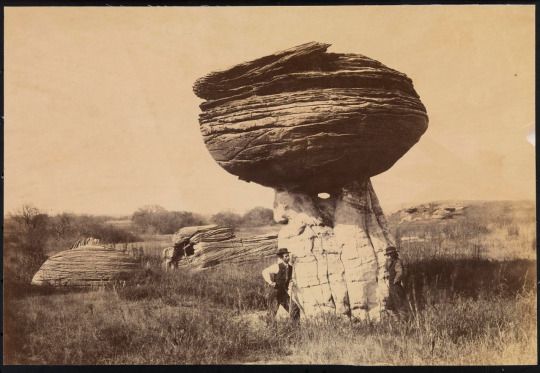
Alexander Gardner ~ Mushroom Rock on Alum Creek, Kansas, 211 miles west of Missouri River, 1867. | William T. Sherman collection. National Museum of the American Indian
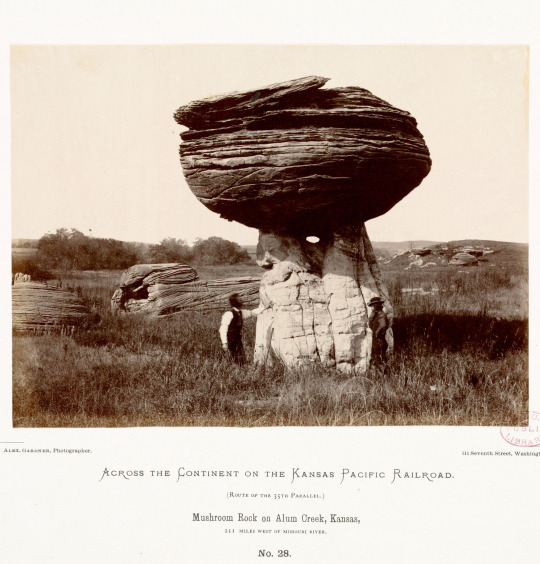
Alexander Gardner ~ Mushroom Rock on Alum Creek, Kansas, 211 miles west of Missouri River, ca. 1867 | Digital Commonwealth

William Henry Jackson (1843-1942) ~ Balanced rock, Garden of the Gods, [ca. 1879–1894]. Albumen print. W. H. Jackson & Co., phot., Denver | Photographs of the American West, Boston Public Library
#alexander gardner#rocky landscape#william henry jackson#landscape#rock formation#balancing rock#kansas#1860s#alex gardner#albumen print#william h. jackson#1870s#1880s#moving rock#huge rock#boulder#moving stone
112 notes
·
View notes
Text

Lewis Powell (né Payne), one of the conspirators in the assassination of Abraham Lincoln who personally attempted to murder Secretary of State William H. Seward. Civil War photographer Alexander Gardner took this picture at the Washington D.C. Naval Yard, 27 April 1865. Two months later Powell was executed for his crimes.
#civil war#history#photography#anarchy#chaos#war#1860s#politics#crime#men#people#b&w#photos#alexander gardner#19th century#dark#lewis payne#prison#guys#abraham lincoln#american history#lewis powell
35 notes
·
View notes
Photo
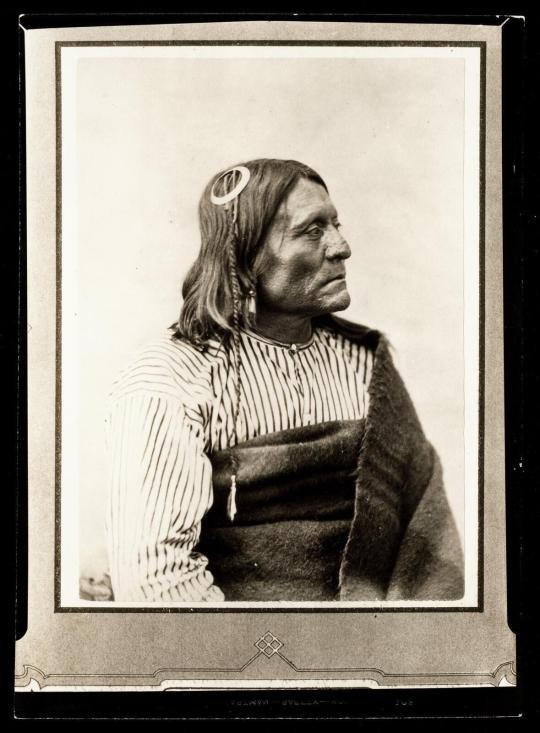
Alexander Gardner. Black Horse (Wichita), 1872.
125 notes
·
View notes
Text
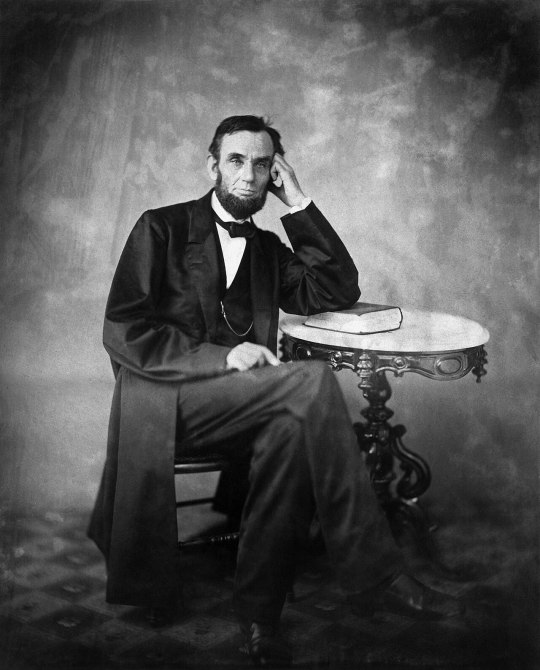
Abraham Lincoln by Alexander Gardner, 1863
23 notes
·
View notes
Text



Alexander Gardner - Gardner's Photographic Sketchbook of the War, Volume 1 - Photographs by Alexander Gardner except where noted.

President Lincoln with his officers

Major General Pleasanton and General Custer by: Timothy H. O'Sullivan
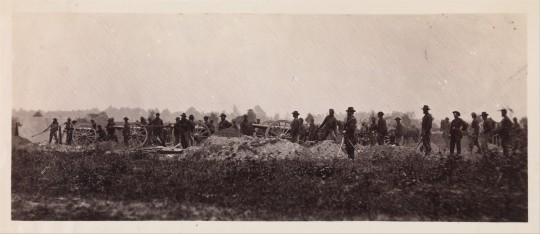
Pennsylvania Light Artillery, Battery B, Petersburg, Virginia by: Timothy H. O'Sullivan

Look at all those troops in the distance
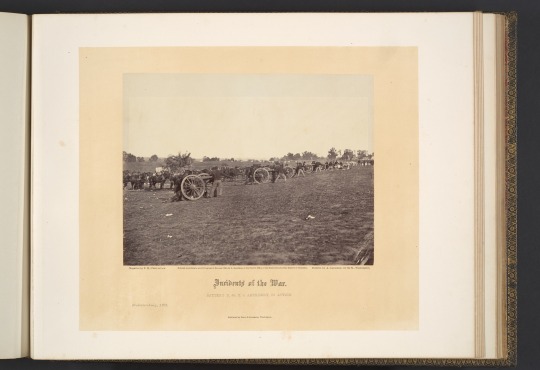
Preparing for battle...
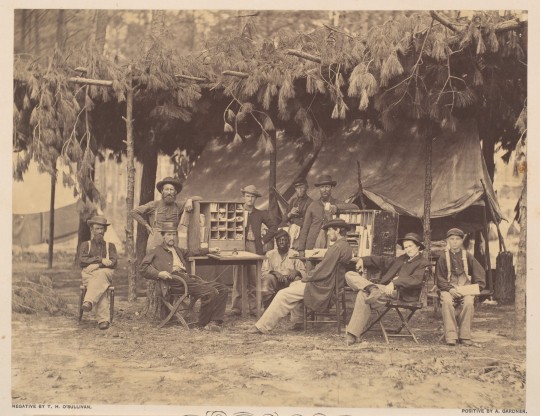
Chief Officer and Clerks of the Ambulance Department, 9th Army Corps, below Petersburg by: Timothy H. O'Sullivan

General Hospital, Point of Rocks, Appomattox River below Petersburg by: Timothy H. O'Sullivan

Outer Confederate Line, Petersburg, Captured on June 15, 1864 by: Timothy H. O'Sullivan

Another photo of the Outer Confederate line, Petersburg, Captured on June 15, 1864 by: Timothy H. O'Sullivan
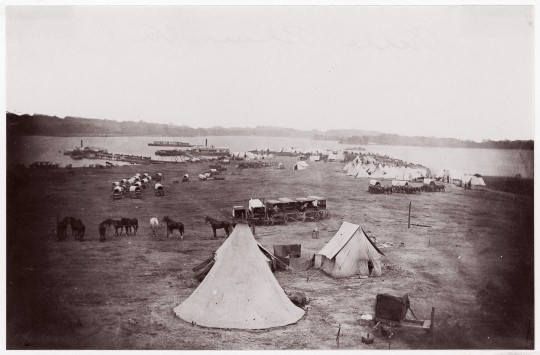
Camp at Belle Plain, Virginia by: Timothy H. O'Sullivan

Confederate Prisoners at Belle Plain by: Timothy H. O'Sullivan

Camp of Confederate Prisoners at Belle Plain Landing, Virginia, Captured with Johnson's Division by: Timothy H. O'Sullivan
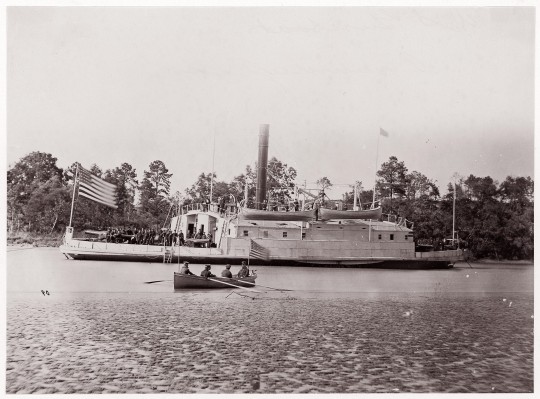
U.S. Gunboat "Commodore Perry" on Pamunkey River by: Timothy H. O'Sullivan
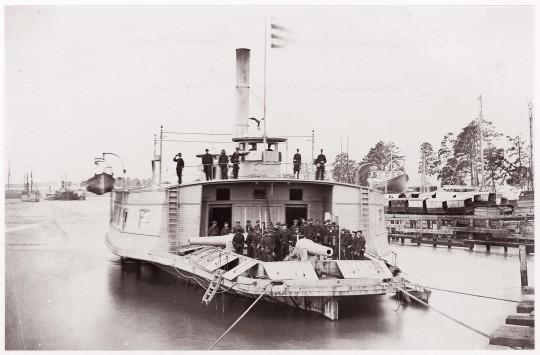
U.S. Gunboat "Commodore Perry" on Pamunkey River
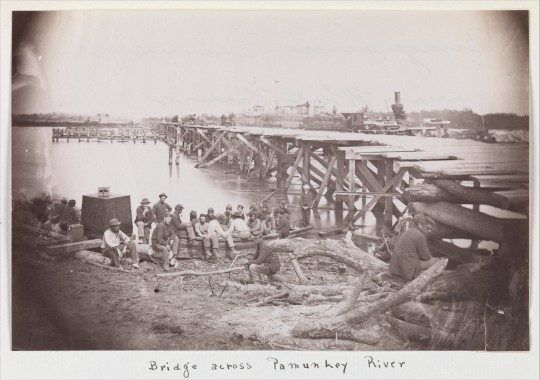
Bridge Across Pamunkey River - by: Timothy H. O'Sullivan
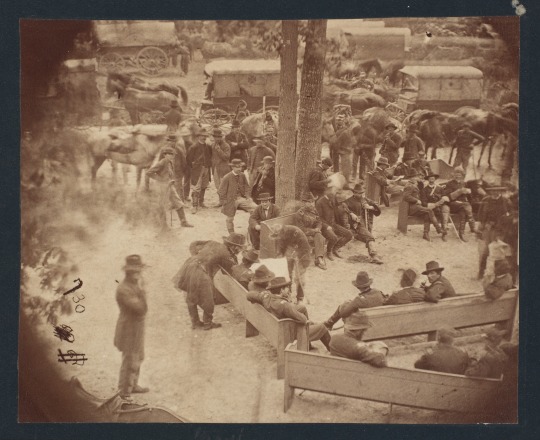
Ulysses S. Grant’s soldiers have removed the church pews and placed them under the trees; staff officers gather around to discuss the situation.
In the background are rows of horse-drawn baggage wagons and ambulances transporting supplies for the next day’s engagement and the wounded to field hospitals. In the foreground General Grant bends over a pew and looks over his shoulder at a large map held in the lap of General George Meade, head of the Army of the Potomac. by: Timothy H. O'Sullivan
#timothy h. o'sullivan#historical photos#alexander gardner#ulysses s. grant#commodore perry#general pleasanton#general custer#pamunkey river
18 notes
·
View notes
Text

Alexander Gardner, Lewis Powell [alias Lewis Payne] - a Conspirator in the Assassination of Abraham Lincoln, 27 April 1865, gelatin silver print from glass negative (Library of Congress, Washington D.C.)
5 notes
·
View notes
Text
The World Changed 161 Years Ago Today
The Civil War defined us as what we are and it opened us to being what we became good and bad things. It was the crossroads of our being, and it was a hell of a crossroads. - Shelby Foote
Less than a week ago, the world remembered the twenty-second anniversary of 9/11 and no matter the radio station, TV program, or sporting event all took time to pause and remember and even New York City’s Fashion Week is paying tribute. It is well and good that we honor that day, the lives lost, and how it changed the world, the shock and horror of the attacks coupled with the heroism of those who rushed in where everyone was trying to run out plus those who fought back over Pennsylvania. Today is another anniversary in American history. This is a day that changed the country forever and cost more lives than 9/11, yet it is unlikely anyone will see one news story about it, no sporting events will take a moment for reflection, and certainly, no fashion show will remember it. One hundred and sixty-one years ago in the countryside of Maryland outside of the small village
of Sharpsburg along the banks of Antietam Creek, 113,000 men fought a battle that changed the United States forever.
The battle started shortly before 5:30 a.m. on the right-hand side of the Union battle line when Northern soldiers advanced on Southern positions believed to be just beyond a fully grown cornfield near a small white church. This church was the gathering place of a German-American pacifist denomination, called the “Dunkards” by locals, as the congregation would submerge or “dunk” new members in Antietam Creek. The church looks more like a schoolhouse as this sect believed a steeple immodest. As the Union soldiers advanced towards the cornfield, officers noticed the shiny glint of bayonets among the corn stalks, and the epic struggle began. The fighting seesawed back and forth with each side charging, taking positions, and then being forced back when the other side countercharged. By 10 that morning little territory had changed hands but the armies on both sides in this area were spent and this section of the battlefield grew quiet. While this part of the battle lasted just four and a half hours, over 13,000 were casualties. A soldier after the battle said the corn stalks were cut down with bullets and shells so close to the ground that one could not have done it better with the sharpest of knives.


The sketch is from Battles and Leaders of the Civil War 1887, p. 687, and the cornfield as it is today from the New York Monument. ©CWTK
As the roar of war died down to their right, the Union soldiers positioned near the center of the battle line prepared to enter the fray. The area where this fighting occurred is compact in size, roughly eight soccer pitches in size. Here the Confederate troops had taken a position along an age-old wagon road that years of rain and use wore away the earth causing the road to be five feet below ground level. This “sunken road” offered ideal concealment and the Union troops attacked in wave after wave. Each attack melted away as snow does when it falls on the warm ground. Eventually, remnants of the famed Union Irish Brigade who were trapped on the battlefield by this murderous position found a way to bring their guns to bear on the sunken road creating such carnage this section of the battlefield is now called Bloody Lane. One of the many ironies of the Civil War is that the Northern troops who fought here were primarily of Irish background and the Southerners in the Bloody Lane were Irish as well. The Union forces were able to finally capture the sunken road but like before, they were not able to hold the positions gained. By 1 pm this area of the battle had grown calm and both sides were back in the positions they were in when the fighting started. Causalities now numbered over 19,000.

The Sunken Road ©CWTK
While the battle for Bloody Lane was concluding, on the far left, Union General Ambrose Burnside (best known for his unique facial hair that created a fashion trend that is still with us today, sideburns) set about forcing the Confederate forces facing him to retreat. Although Burnside had a great numerical superiority in men 12,500 to 3,500, the defenders were located on a hilltop with Antietam Creek between them and Burnside’s men. The creek was deep and the only way the Union troops could cross was on a stone bridge just over twelve feet wide. Even though they knew what they were facing, the Union men formed their lines, marched to, and attempted to cross the bridge while shot and shell rained down from the hill. For three long and horrific hours, the Union tried and retried crossing the stone bridge with each attempt failing. Finally, enterprising soldiers discovered a shallow section of the Antietam downstream shielded from view allowing them to wade across and finally capture the hill. This success was short-lived as Southern reinforcements arrived and pushed the nearly victorious soldiers of Burnside’s command back to near where their day started.

The stone (Burnside) bridge over Antietam Creek ©CWTK
It is now just after 5:30 pm and the battle has essentially ended. After nearly twelve hours of bloodshed, the battle has left 3,650 dead, 17,300 wounded and 1,770 missing for a total of 22,720 casualties. Twenty percent of the men that went into battle that day were wounded or dead. The story does not end here for those unlucky souls who were wounded as modern medicine of that time required the amputation of limbs when an arm or leg was struck by a bullet. The ammunition used at the time was made from soft lead, unlike the modern steel jacketed rounds that ‘clip’ bone possibly allowing leg/arm wounds to heal, the soft lead destroyed bone and tissue leaving the surgeons no choice but to amputate. Those who received wounds to their arms or legs were far luckier than those who received a wound to their core. That same soft lead that would destroy bones would severely damage internal organs and the doctors did not yet have the knowledge or tools to repair such trauma. Soldiers at the time called it being “gut shot” and knew it was a death sentence (often a painful and very slow process that could take days to weeks). This is why if you see photographs of the Civil War dead, it will often look as though someone has rummaged through the dead soldiers' clothing in search of valuables. This was the wounded men themselves ripping away their clothing frantically looking and hoping the wound they received would not mean death. Since even state-of-the-art medical care then was crude and unsterile, twenty-two percent of those wounded later died of their wounds. When the dead on the field of battle are combined with those soldiers whose battle for life ended at a hospital, this day cost 7,456 lives.
This battle produced three significant impacts that touch every American even today.
First, the American Civil War occurred as the art of photography was developing. Alexander Gardner, a Scottish immigrant, became well known as well as connected because he managed famed photographer Matthew Brady’s Washington DC gallery (In fact many of Gardner’s Civil War photographs were originally credited to Brady). Through his connections, Gardner became the staff photographer for the Union Army that fought at Antietam. While the cameras of this era did not have fast enough shutters to capture ‘action’ photographs, Gardner’s proximity and the wagon he converted into a traveling darkroom allowed him to record the first photographs of the war that the public had ever seen. Until these photographs were exhibited, the only images of war seen by the lion’s share of people were products of artists’ imaginations which often glorified combat. Starting with Antietam, images of war would no longer be from imaginations but would be told through the lenses of photojournalists.
Here are some of Gardner’s images from Antietam including the iconic photo of Bloody Lane. He was able to gain access to the battlefield on September 19, 1862, two days after the battle.
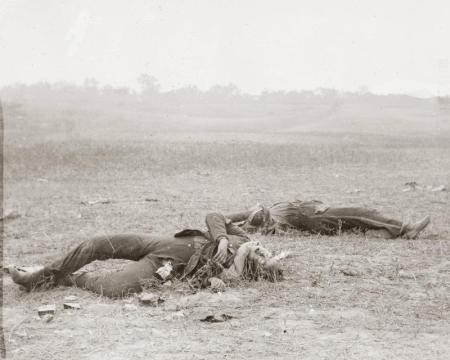
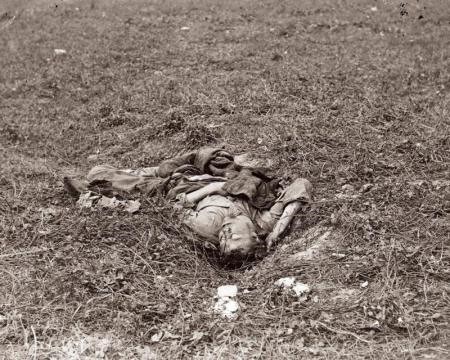


Below is Alexander Gardner’s famous “Bloody Lane” photograph:
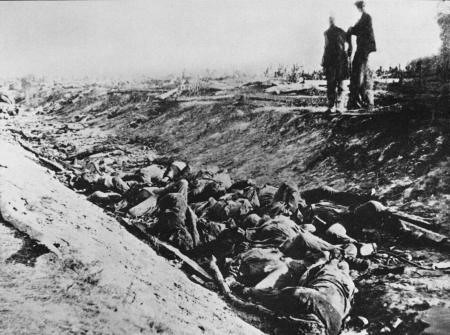
Another outcome of this battle was the Union victory at Antietam kept the world's superpowers, England and France, from involving themselves in the conflict. A quick history lesson for those who do not know, the United States was not a superpower in 1862. Until this point in the war, all the major battles fought in the Eastern Theater, roughly meaning near Washington DC, (Antietam is less than an hour and 1/2 drive from Capitol Hill even with notorious D.C. traffic) had resulted in Confederate victories. These repeated victories caused the governments of England and France to consider recognizing the Confederacy as an independent country, just as France had done for the Colonies during the American Revolution. France and England were considering this action primarily to get their massive textile factories producing again and bring large numbers of their citizens back to work. The South’s cotton was the raw material that fed huge mills and the Union blockade as well as the South’s decision to drastically limit exports had cut this flow of raw material off. Because of a lack of cotton, these massive mills were shuttered leaving thousands of their employees out of work. In England alone, job losses were around 60% in the textile industry, leaving approximately 295,000 unemployed and the majority of the unemployed being in Lancashire. There was no unemployment insurance at the time and the politicians had a large number of their constituents needing to return to work simply to feed their families. However, the resolve of the Union to repel this invasion led to England and France withholding recognition. Without foreign assistance, the Confederacy would struggle to acquire the provisions needed to wage war as well as develop and grow an economy. The failure to secure diplomatic status as an independent country was a death blow to hopes for the Confederacy.
Most Americans today when asked what caused the Civil War, will answer slavery and with most momentous events, simple one-word answers sound great but there is much more to the rest of the story. Slavery was the root cause and always an emotional undercurrent to the conflict however, if you asked the average Southerner what they were fighting for they would share that they were fighting for states’ rights, and in the North, the majority of the public felt they fought to preserve the Union. This view can be seen in President Lincoln’s open letter to newspaper editor Horace Greeley who had attacked him for not ending slavery:
My paramount object in this struggle is to save the Union, and is not either to save or to destroy slavery. If I could save the Union without freeing any slave I would do it, and if I could save it by freeing all the slaves I would do it; and if I could save it by freeing some and leaving others alone I would also do that. What I do about slavery, and the colored race, I do because I believe it helps to save the Union; and what I forbear, I forbear because I do not believe it would help to save the Union. I shall do less whenever I shall believe what I am doing hurts the cause, and I shall do more whenever I shall believe doing more will help the cause.
An amazing note about this letter to Greeley, Lincoln wrote it on August 22, 1862, exactly one month after he had decided to issue the Emancipation Proclamation and was waiting for the correct time to release the proclamation. The pundits of the era attacked him for this saying this letter showed a lack of commitment to the abolition of slavery. What Lincoln was doing in reality was subtlety informing the public that when he released the proclamation it was part of the plan to save the Union and preserve the coalition of Unionists and Abolitionists in Congress working together.
On July 22, 1862, Abraham Lincoln summoned his cabinet for a meeting, which was a surprise to its members. At this meeting, the President announced he had made up his mind to issue an Emancipation Proclamation and this was not up for debate. William Henry Seward, the Secretary of State and today best known for what was called Seward’s folly the purchase of Alaska from Russia offered a piece of advice by suggesting that Lincoln wait until the army had achieved a major victory because “such a proclamation ought to be borne on the bayonets of an advancing army, not dragged in the dust behind a retreating one”. Issuing the proclamation without achieving a substantial victory would give the English and French governments the impression Lincoln’s government was grasping at straws to retain power. Antietam was the victory that Abraham Lincoln needed to release the Preliminary Emancipation Proclamation. The repulse of the invasion of Maryland provided him with the victory needed. Just five days after the victory at Antietam, President Lincoln announced the Preliminary Emancipation Proclamation and that it would be formally issued on January 1, 1863.
“. . . on the first day of January . . . all persons held as slaves within any State, or designated part of a State, the people whereof shall then be in rebellion against the United States shall be then, thenceforward, and forever free.” President Abraham Lincoln, preliminary Emancipation Proclamation, September 22, 1862“
For the full document, click here.
So as we go through our normal lives today, take a second and remember the battle that changed the world for the better. Because of the Battle of Antietam, one hundred and sixty-one years ago, photography gave us images of war’s terrible price for the first time, England and France stayed at arm’s length from the American Civil War, and allowed Abraham Lincoln to transform the war from a conflict about states’ rights/preserving the Union to a struggle to end slavery.
I am naturally anti-slavery. If slavery is not wrong, nothing is wrong. - Abraham Lincoln
©CWTK2023
7 notes
·
View notes
Text
Alexander Gardner photograph of Abraham Lincoln

3 notes
·
View notes
Text

[Photo of Abraham Lincoln by Alexander Gardner, November 8, 1863]
+
LETTERS FROM AN AMERICAN
February 11, 2024
HEATHER COX RICHARDSON
FEB 11, 2024
On February 12, 1809, Nancy Hanks Lincoln gave birth to her second child, a son: Abraham.
Abraham Lincoln grew up to become the nation’s sixteenth president, leading the country from March 1861 until his assassination in April 1865, a little over a month into his second term. He piloted the country through the Civil War, preserving the concept of American democracy. It was a system that had never been fully realized but that he still saw as “the last, best hope of earth” to prove that people could govern themselves.
“Four score and seven years ago,” he told an audience at Gettysburg, Pennsylvania, in November 1863, “our fathers brought forth on this continent a new nation, conceived in liberty and dedicated to the proposition that all men are created equal.”
Lincoln dated the founding of the nation from the Declaration of Independence rather than the Constitution, the document enslavers preferred because of that document’s protection of property. In the Declaration, the Founders wrote that they held certain “truths to be self-evident, that all men are created equal, that they are endowed by their Creator with certain unalienable Rights, that among these are Life, Liberty and the pursuit of Happiness.—That to secure these rights, Governments are instituted among Men, deriving their just powers from the consent of the governed….”
But in Lincoln’s day, fabulously wealthy enslavers had gained control over the government and had begun to argue that the Founders had gotten their worldview terribly wrong. They insisted that their system of human enslavement, which had enabled them to amass fortunes previously unimaginable, was the right one. Most men were dull drudges who must be led by their betters for their own good, southern leaders said. As South Carolina senator and enslaver James Henry Hammond put it, “I repudiate, as ridiculously absurd, that much-lauded but nowhere accredited dogma of Mr. Jefferson, that ‘all men are born equal.’”
In 1858, Abraham Lincoln, then a candidate for the Senate, warned that arguments limiting American equality to white men were the same arguments “that kings have made for enslaving the people in all ages of the world…. Turn in whatever way you will—whether it come from the mouth of a King, an excuse for enslaving the people of his country, or from the mouth of men of one race as a reason for enslaving the men of another race, it is all the same old serpent.” Either people—men, in his day—were equal, or they were not. Lincoln went on, “I should like to know if taking this old Declaration of Independence, which declares that all men are equal upon principle and making exceptions to it…where will it stop?”
Lincoln had thought deeply about the logic of equality. In his 1860 campaign biography, he permitted the biographer to identify six books that had influenced him. One was a book published in 1817 and wildly popular in the Midwest in the 1830s: Capt. Riley’s Narrative. The book was written by James Riley, and the full title of the book was “An Authentic Narrative of the Loss of the American Brig Commerce, Wrecked on the Western Coast of Africa, in the Month of August, 1815, With the Sufferings of Her Surviving Officers and Crew, Who Were Enslaved by the Wandering Arabs on the Great African Desart [sic], or Zahahrah.” The story was exactly what the title indicated: the tale of white men enslaved in Africa.
In the 1850s, on a fragment of paper, Lincoln figured out the logic of a world that permitted the law to sort people into different places in a hierarchy, applying the reasoning he heard around him. “If A. can prove, however conclusively, that he may, of right, enslave B.—why may not B. snatch the same argument, and prove equally, that he may enslave A?” Lincoln wrote. “You say A. is white, and B. is black. It is color, then; the lighter, having the right to enslave the darker? Take care. By this rule, you are to be slave to the first man you meet, with a fairer skin than your own. You do not mean color exactly?—You mean the whites are intellectually the superiors of the blacks, and, therefore have the right to enslave them? Take care again. By this rule, you are to be slave to the first man you meet, with an intellect superior to your own. But, say you, it is a question of interest; and, if you can make it your interest, you have the right to enslave another. Very well. And if he can make it his interest, he has the right to enslave you.”
Lincoln saw clearly that if we give up the principle of equality before the law, we have given up the whole game. We have admitted the principle that people are unequal and that some people are better than others. Once we have replaced the principle of equality with the idea that humans are unequal, we have granted approval to the idea of rulers and ruled. At that point, all any of us can do is to hope that no one in power decides that we belong in one of the lesser groups.
In 1863, Lincoln reminded his audience at Gettysburg that the Founders had created a nation “dedicated to the proposition that all men are created equal,” but it was no longer clear whether “any nation so conceived and so dedicated, can long endure.” During the Civil War, the people of the United States were defending that principle against those who were trying to create a new nation based, as the Confederacy’s vice president Alexander Stephens said, “upon the great truth” that men were not, in fact, created equal, that the “great physical, philosophical, and moral truth” was that there was a “superior race.”
In the midst of the Civil War, Lincoln called for Americans to understand what was at stake, and to “highly resolve…that this nation, under God, shall have a new birth of freedom—and that government of the people, by the people, for the people, shall not perish from the earth.”
LETTERS FROM AN AMERICAN
HEATHER COX RICHARDSON
#A. Lincoln#equality#rule of law#history#Heather cox Richarson#Letters From An American#American History#slavery#Declaration of Independence#Alexander Gardner
6 notes
·
View notes
Text




A few others who worked with Louis on Faith in the Future: Red Triangle Productions, Karma Artists Management, Alexander Gardner [8.31.22]
#fitf announcement#song writing louis#lt mention#robert harvey#red triangle productions#karma artists#alexander gardner#team louis#my repost
2 notes
·
View notes
Text
Monday’s Photography Inspiration – Alexander Gardner
Monday’s Photography Inspiration – Alexander Gardner
Alexander Gardner was a Scottish photographer was born in Paisley, Renfrewshire, on 17 October 1821. He became an apprentice jeweler at the age of 14, lasting seven years. Gardner was raised in the Church of Scotland and influenced by the work of Robert Owen, Welsh socialist and father of the cooperative movement.
By adulthood he desired to create a cooperative community in the United States…
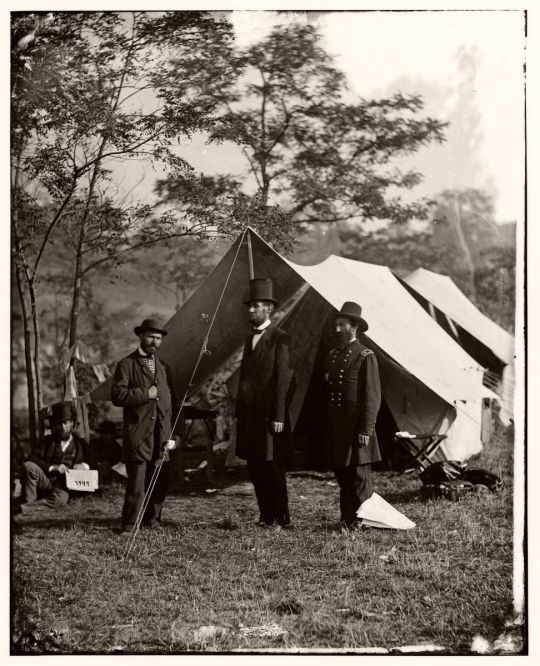
View On WordPress
#Abraham Lincoln#Abraham Lincoln assassination#Alexander Gardner#Alexander Gardner Photography#Fredericksburg#Gettysburg#he siege of Petersburg#inspiration#inspiration of the week#Inspirational#inspirational photographers#inspirations#Inspirations Art Of Photography#inspiring photographers#Monday inspirations#Monday&039;s photography inspiration
5 notes
·
View notes
Text

TIL Abraham Lincoln was kicked in the head by a horse at age 9, almost severed a thumb with an axe, got frostbite on his feet, clubbed on the head during a robbery, had malaria and smallpox, and experienced the death of his mother, sister, and 2 sons. He suffered from melancholy (clinical depression).
firstpc13, Alexander Gardner
0 notes
Text
Des portraits de chefs indiens et autres par Alexander Gardner dans les années 1860
Nouvel article publié sur 2tout2rien: https://www.2tout2rien.fr/portraits-de-chefs-indiens-alexander-gardner/
Des portraits de chefs indiens et autres par Alexander Gardner dans les années 1860

#19eme siecle#Alexander Gardner#amerindien#années 1860#chef#chemin de fer#histoire#indien#ouest americain#photographe#portrait#USA#vintage#imxok#people
0 notes
Text
Woke up from a Capsule Monsters dream where Yugi merged with Dark Magician while figuring out a puzzle, but was too tall for its security system and got hit with an energy ball, so he merged with 'Pearl Magician' instead, who looked like Silent Magician Level 4 but was wearing a white version of the Dark Magician Duel Armor. He was very worried Dark Magician was hurt.
Ryou was also there and there was some conflict/confusion over whether Yami Bakura or Alexander was possessing him, and at one point Tea borrowed Dark Witch's spear to defend herself and spooked him.
#yu gi oh#dream#capsule monsters#yugi mutou#dark magician#tea gardner#ryou bakura#yami bakura#alexander the great#yami alexander#silent magician#dark witch
8 notes
·
View notes
Text
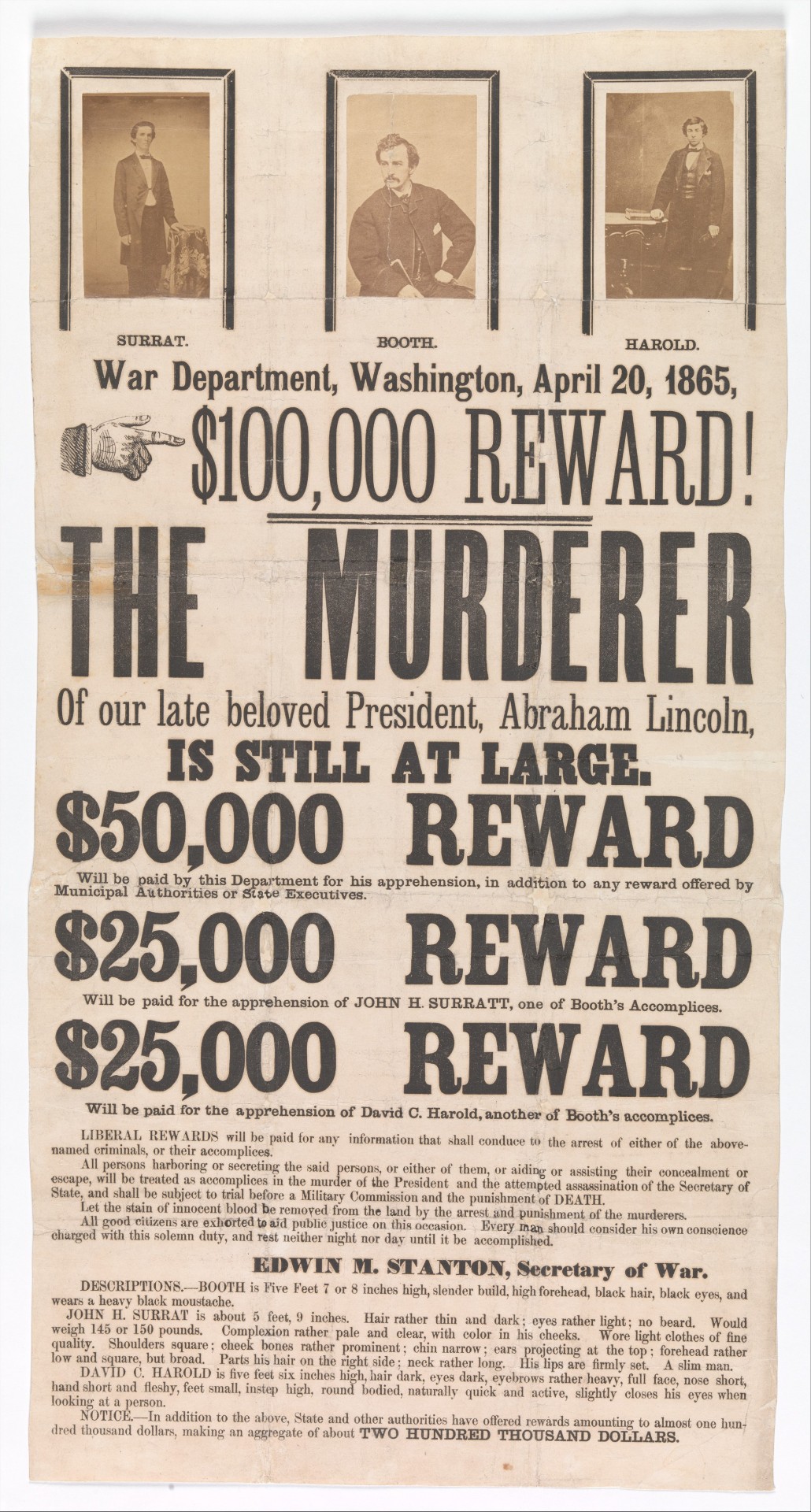
Various artists/makers - Broadside for the Capture of John Wilkes Booth, John Surratt, and David Herold - 1865
On the night of April 14, 1865, just five days after Lee's surrender to Grant at Appomattox, John Wilkes Booth shot Lincoln at the Ford Theatre in Washington, D.C. Within twenty-four hours, Secret Service director Colonel Lafayette Baker had already acquired photographs of Booth and two of his accomplices.
The three photographs were taken to Alexander Gardner's studio for immediate reproduction. This bill was issued on April 20, the first such broadside in America illustrated with photographs tipped onto the sheet.


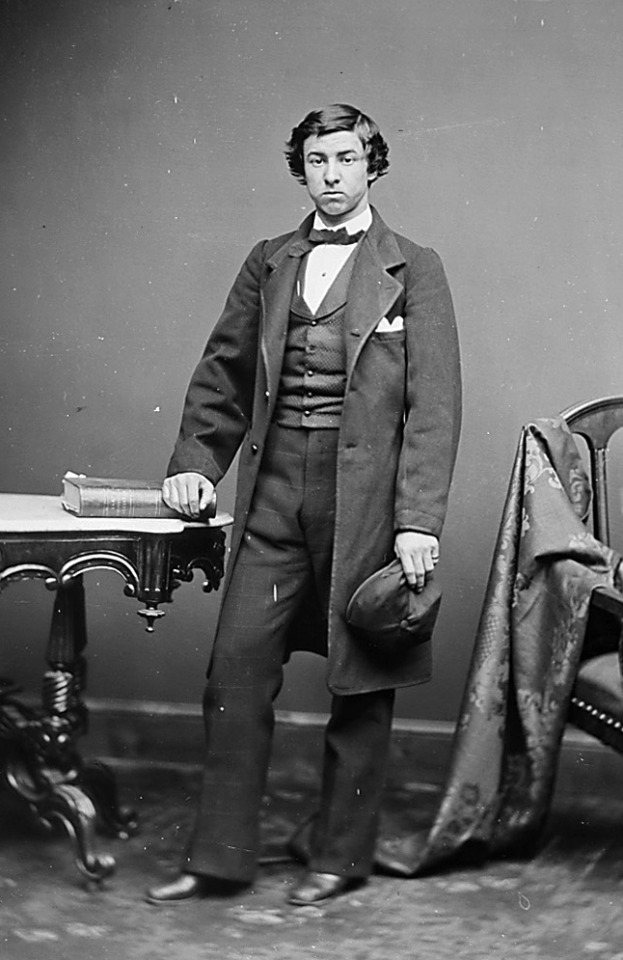
Photographs of John Surratt, John Wilkes Booth and David Herold used for the Wanted Poster, the first broadside to use actual photo images.

Mourning Corsage with Portrait of Abraham Lincoln
About the time of Abraham Lincoln’s long funeral tour, April 21 to May 3, 1865, enterprising vendors produced mourning corsages featuring black silk ribbons adorned with small circular photographs of the president.

Alexander Gardner - Planning the Capture of Booth - 1865
Secret Service Director Colonel Lafayette Baker sits and studies maps of the area where Booth was believed to be hiding in Maryland or Virginia. The portrait, in wood-engraving form, illustrates a long article published by Harper’s Weekly on May 13, 1865.
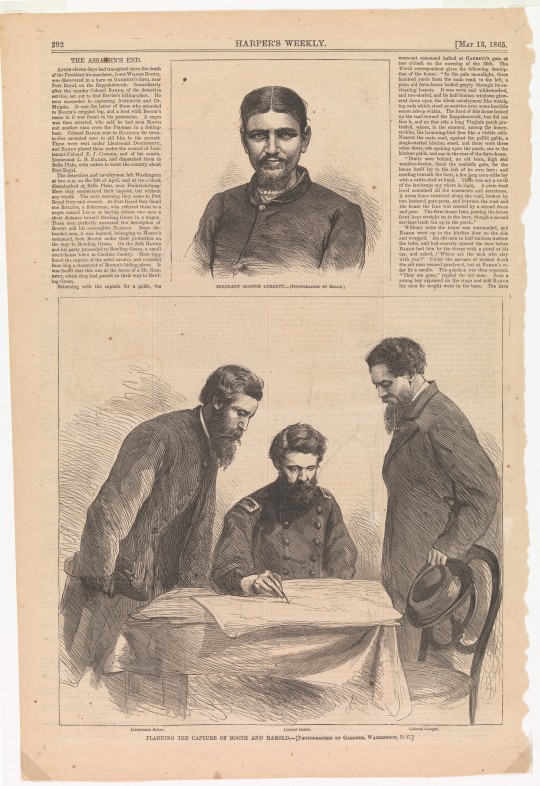
Harper’s Weekly on May 13, 1865.
According to the news story, government agents found Booth in a barn near Port Royal, Virginia, and demanded that he surrender. He refused, and when they warned him that soldiers would set fire to the barn, Booth responded: “Well then, my brave boys, prepare a stretcher for me.” Booth was shot as he attempted to escape the conflagration and died three hours later.

Alexander Gardner - Execution of the Conspirators - July 7, 1865
Photograph of the execution of Mary Surratt, Lewis Paine, David Herold, and George Atzerodt on July 7, 1865
This photo shows the final preparations on the scaffolding in the yard of the Old Arsenal Prison. The day was extremely hot and a parasol shades Mary Surratt, seated at the far left of the stage. (She would become the first woman in America to be hanged.) Two soldiers stationed beneath the stage grasp the narrow beams that hold up the gallows trapdoors. The soldier on the left would later admit he had just vomited, from heat and tension. Only one noose is visible, slightly to the left of Surratt; the other three nooses moved during the exposure and are registered by the camera only as faint blurs. Members of the clergy crowd the stage and provide final counsel to the conspirators. A private audience of invited guests stands at the lower left.


2 details from Gardner's "Execution of the Conspirators" series of photos.
The execution took place after 1pm and was watched by around a thousand people, including members of the government, soldiers, friends and relatives of the condemned.
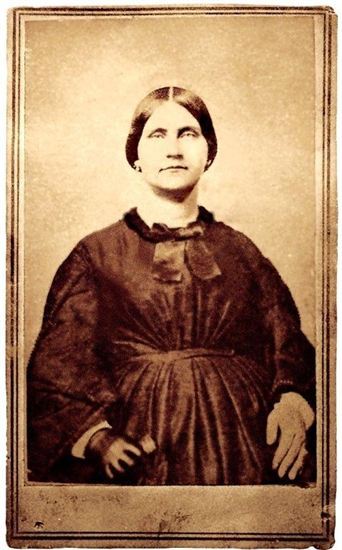
Mary Surratt, mother of John Surratt. She owned the boarding house that the conspirators used as a safe house and to plot the assassinations. She was convicted of conspiracy by a military tribunal and hanged. Her son was the only conspirator who escaped. He eluded arrest following the assassination by fleeing to Canada, then to Europe and then to Egypt, but was eventually arrested and extradited. By the time of his trial, the statute of limitations had expired on most of the potential charges which meant that he was never tried.
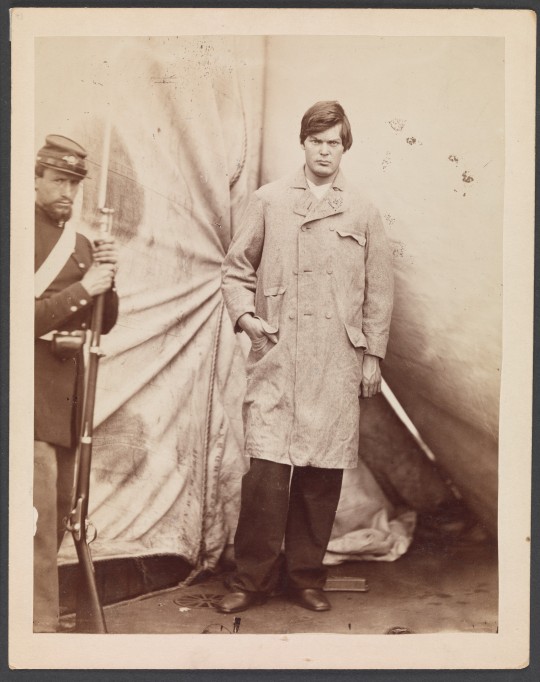
At roughly the same time that John Wilkes Booth shot President Lincoln, co-conspirator Lewis Paine attempted unsuccessfully to murder Secretary of State William Seward. He was one of those executed at the Old Arsenal Prison on July 7th.
#abraham lincoln#William Seward#Republican National Convention#Old Arsenal Prison#Execution of the Conspirators#alexander gardner#Lafayette Baker#Harper’s Weekly#Ford Theatre#historical photos#vintage photography#photography
2 notes
·
View notes
Text


The animation in capsule monsters is not bad but that one time they forgot to draw Alexander's head...
#yugioh#yu gi oh#yu-gi-oh#yami yugi#anzu mazaki#tea gardner#katsuya jonouchi#joey wheeler#alexander the great#solomon muto#sugoroku mutou
88 notes
·
View notes